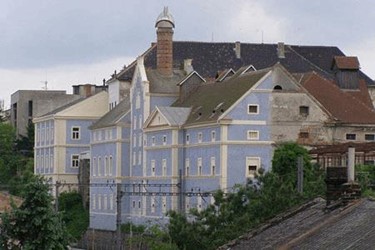Pharma's Potemkin Village On The River Of Outsourcing

By Louis Garguilo, Chief Editor, Outsourced Pharma

Flying over the Mississippi River on my way to Outsourced Pharma San Francisco, I had a Potemkin moment.
Grigory Potemkin was governor of war-ravaged New Russia in 1787. He’s said to have deployed a shiny “mobile village” along the Dnieper River to impress Catherine II (and the world) as she inspected the region from her barge. Once Catherine had floated by, the village was disassembled, and rebuilt downstream before her arrival at the next “vibrant” location.
Were we, too, in the year 2016, deploying polished porticoes to hide a dimmer reality, at our Outsourced Pharma conferences, first in Boston, then San Diego, and now heading to San Francisco?
Preparing For Arrival
Outsourced Pharma brings drug owners together with their contract development and manufacturing organizations (CMOs), and other external partners. We discuss the disciplines and challenges of tech transfer and project management; processes, platforms and scale ups (and downs); reliability, quality and regulatory compliance; partner selection and measurement; costs and models for outsourcing; risk assessment and mitigation; customers and patients.
This year there’s also been a brightly colored thread drawn through all these discussions: The collective desire for better models of working together, new applications of science, technology and engineering, and for advancements of mind and attitudes as well as equipment and facilities.
Pharma itself seems determined to weave more innovation – or more precisely “co-innovation” – into its drug development outsourcing strategies. Thus, we dedicated our San Francisco gathering to this theme.
But as the tires bumped the tarmac, ending our plane’s descent into San Francisco, herein also lay the roots of my self-doubting: We’d not been able to get a name-brand Biotech or Pharma to agree to get up on stage, side-by-side with their drug-development service partner, and showcase a case study on how the two sides were working together to bring a new science, technology, or innovation to a project, and perhaps across the industry.
As organizers, we may have been late in inviting our Outsourced Pharma community to submit proposals; the overall timing of November might have been bad; or it might have been just one of those things that didn’t come together this time.
Yet, because there was so much pre-conference enthusiasm, and all those earlier encomiums to partnered innovation, we had expected to pull this particular session together. In retrospect, I was forewarned by some close advisors: “You’re being naïve,” they said. “The industry still needs to keep its secrets.”
But we weren’t looking for secrets, and you have to ask: Are we really opening up as an industry, ready to share best practices, and yes to a degree, innovation and advancements that can be advantaged by more molecules, and more patients in need of new drugs?
Actually, we did press our community – made up of sponsors like Achaogen, Amgen, ADC Therapeutics, Pfizer, and Shire, and providers like Althea, PCI Synthesis, Patheon, Pharmatek, as well as industry consultants like Rondaxe, Tunnell, and Pharmatech, among many others – openly and forcefully just months earlier in San Diego (documented in this editorial). We asked, “Is this talk about partnerships, building financial models for and acceptance of outside innovation, real?”
The strong public confirmations felt genuine. The verdict there and in other venues has been that if not yet fully actuated, the industry is undoubtedly propelled towards a refined sponsor-provider business model. Big Pharma is trying to convince service providers that outsourcing is now more a joint venture than a contract for a hired gun. Why the need for the PR? It appears Pharma is paying for its relationship(less) sins of the past, and CMOs are still hovering on the skeptical side.
So we were making strides in San Diego; the hope was we’d arrive in San Francisco.
A Real Destination
In many regards, we made it.
First, our clarion call to Silicon Valley to join our community was duly answered. Technology companies – and venture capital – teamed up with us in an expanded dialogue on bridging cultures and defining needs.
Early on we defined innovation, as a process of introducing new ideas, technologies and models. It was agreed process must be embedded at sponsors and providers to more successfully bring new drugs forward, and improve the further development, manufacturing, and delivery of existing drugs.
And we did end up with many of those real-life examples – and best practices – for co-development. Again: nobody was looking for trade secrets, but for stories of shared experience. The two days of thought-leadership was inspiring.
Pharma needs an assist from technology innovators of various stripes; biotechs will increasingly rely on accurately identifying innovative contract development and manufacturing organizations to partner with; and the service providers are coming around to the belief they must contribute innovative solutions to growing development challenges at their customers. Either that or surrender competitive advantage.
So there were no false edifices along the banks of Outsourced Pharma; there never are. In fact, we’ve spent the year scraping off any fresh paint that attempts to hide a different underlying reality.
We certainly didn’t get it all figured out in 2016 … but our Potemkin moment has passed.
-----------
photo credit: (http://www.gnu.org/copyleft/fdl.html)
